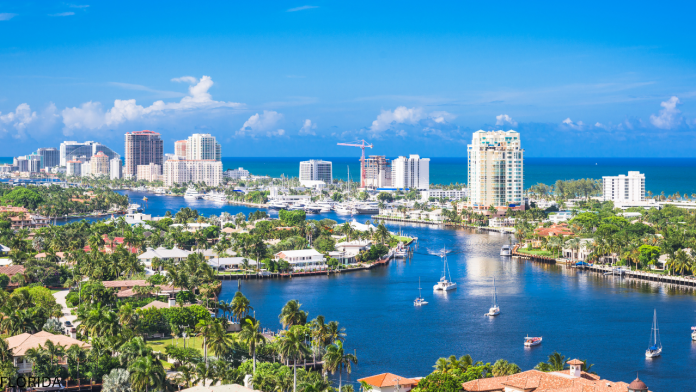The Changing Migration Pattern: Exploring the Decline in Florida’s Population GrowthOver the past decade, Florida has been heralded as a magnet for migrants seeking sunny weather, tax advantages, and vibrant communities. However, recent data indicates a slowdown in this influx, prompting analysts and residents alike to ask: what is driving this shift? While Florida’s allure remains, several key factors are contributing to a decline in migration, including soaring living costs, a competitive job market, high insurance rates, traffic congestion, and the increasing threat of natural disasters such as hurricanes and floods.
The Escalating Cost of Living
One of the most significant deterrents for prospective movers is Florida’s rising cost of living. Historically, Florida has been seen as an affordable alternative to more expensive states like California and New York. Yet, in recent years, housing prices have surged, driven by high demand and limited supply. The median home price in many Florida markets has surpassed $400,000, placing homeownership out of reach for many middle-income families.
Additionally, the costs of utilities, groceries, and healthcare have risen, further squeezing household budgets. For retirees and younger families alike, these financial pressures diminish the state’s once-competitive appeal. This has led some to reconsider relocation plans or to stay in areas with lower living costs.
Challenges in the Job Market
While Florida’s economy is diverse, certain sectors such as tourism and hospitality have suffered setbacks due to the pandemic, affecting employment opportunities. Jetsetter industries like hotel and restaurant work faced layoffs and slow recoveries, making job stability a concern for new residents.
Meanwhile, high-profile companies have begun to reevaluate their Florida operations amid ongoing economic uncertainties, further dampening migration. Though the state still attracts many in healthcare, finance, and tech, the overall job market’s vigor is less certain, prompting some to look elsewhere for employment prospects.
High Insurance Rates and Their Impact
Insurance costs are another significant hurdle. Florida leads the nation in hurricane activity, making property insurance notoriously expensive and sometimes hard to obtain. Insurance premiums for homeowners and auto policies can be several times higher than in other states, especially in vulnerable coastal areas.
Rising insurance rates not only increase monthly expenses but also make some neighborhoods financially unsustainable for new buyers or renters. These costs can influence decisions to relocate, particularly for retirees on fixed incomes or families budgeting tightly.
Traffic Congestion and Infrastructure Strains
While renowned for its sunshine and beaches, Florida’s rapid growth has led to severe traffic congestion in major metros such as Miami, Orlando, Tampa, and Jacksonville. Long commutes and transportation bottlenecks diminish quality of life, discouraging some from settling down.
Infrastructure development has struggled to keep pace with population growth, resulting in clogged roads, extended commute times, and increased frustration among residents. For some, the commute and transportation challenges outweigh the benefits of living in Florida, further contributing to the slowdown in new migration.
Natural Disasters: Hurricanes and Flooding
Economic and infrastructural factors are compounded by Florida’s vulnerability to natural disasters. Hurricanes, which pose a recurring threat each hurricane season, can cause widespread destruction and expense. The risk of hurricanes has grown more acute with climate change, leading to increased insurance premiums and home renovation costs after storm damage.
Flooding is another concern, especially in low-lying coastal areas. The increasing frequency and severity of floods due to rising sea levels and intense storms threaten property stability and safety. These risks have prompted some individuals and families to reconsider relocating to Florida altogether or to move away from high-risk zones.

The Broader Implications
The decline in migration to Florida has broader implications for the state’s economy and population growth. While many areas still see inbound movement, the rate of growth has slowed, affecting real estate development, local economies, and political representation.
Moreover, the demographic composition is shifting. Younger populations seeking affordable living are being replaced by more cautious, established residents who value stability over growth. This evolution may influence economic policies, infrastructure planning, and environmental strategies in the coming years.
Looking Ahead: Adaptive Strategies and Future Trends
Florida’s policymakers and residents are aware of these challenges. Efforts to diversify the economy, improve infrastructure, and implement resilient building codes are underway to mitigate some risks. Additionally, some regions are exploring smarter urban planning and flood mitigation projects.
Nevertheless, the state’s attractiveness is unlikely to evaporate entirely. Climate adaptation strategies, insurance reforms, and economic diversification could bolster Florida’s appeal for future migrants. However, understanding and addressing the current barriers will be crucial.
The decline in migration to Florida is a complex phenomenon driven by economic, environmental, and infrastructural factors. While the state still offers numerous attractions, increased costs, safety concerns, and quality of life issues are prompting a reassessment among potential newcomers. As Florida navigates these challenges, its future growth trajectory will depend on how effectively it manages the trade-offs between development, sustainability, and resilience.



